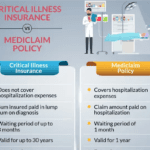Health Insurance 101: Understanding Plans, Networks, and Copays
Navigating the world of health insurance can feel overwhelming, but understanding the basics can help you make informed decisions about your coverage. Whether you’re selecting a plan through your employer, the marketplace, or a private provider, knowing how different aspects of health insurance work can save you money and ensure you get the care you need. In this post, we’ll break down the key elements of health insurance: plan types, provider networks, and copays.
1. Types of Health Insurance Plans
Health insurance plans generally fall into several categories, each with its own set of rules regarding costs and flexibility in choosing providers:
Health Maintenance Organization (HMO)
- Requires you to choose a primary care physician (PCP).
- You need a referral from your PCP to see a specialist.
- Only covers care from doctors and facilities within the network.
- Typically has lower premiums and out-of-pocket costs.
Preferred Provider Organization (PPO)
- Offers more flexibility in choosing healthcare providers.
- You can see specialists without a referral.
- Covers both in-network and out-of-network care (but out-of-network is more expensive).
- Generally has higher premiums than HMO plans.
Exclusive Provider Organization (EPO)
- Similar to an HMO but without the need for referrals.
- Only covers in-network care, except in emergencies.
- Typically has lower premiums than PPOs.
Point of Service (POS)
- A hybrid of HMO and PPO plans.
- Requires a PCP and referrals for specialists.
- Covers out-of-network care but at a higher cost.
Understanding the type of plan that fits your lifestyle and budget is the first step in making an informed decision.
2. Understanding Provider Networks
Insurance companies work with specific doctors, hospitals, and specialists to create provider networks. Staying within your plan’s network is crucial to minimizing costs.
- In-Network Providers: These are doctors and facilities that have agreements with your insurance company to provide services at negotiated rates. Using in-network providers usually results in lower costs.
- Out-of-Network Providers: These are doctors and facilities that do not have a contract with your insurer. If your plan covers out-of-network care, expect to pay higher fees, and in some cases, full costs upfront.
- Emergency Care Exception: Many insurance plans cover emergency care regardless of whether the provider is in-network, but it’s best to confirm the specifics with your insurer.
When choosing a plan, check whether your preferred doctors and hospitals are in-network to avoid unexpected expenses.
3. Copays, Deductibles, and Coinsurance
Health insurance involves various cost-sharing mechanisms. Here’s what you need to know:
- Copay: A fixed amount you pay for a covered healthcare service, such as a doctor’s visit or prescription medication. For example, you may have a $30 copay for a specialist visit.
- Deductible: The amount you must pay out-of-pocket before your insurance starts covering certain services. For instance, if you have a $1,500 deductible, you must pay that amount before your insurer covers non-preventive care.
- Coinsurance: The percentage of costs you pay after meeting your deductible. If your coinsurance is 20%, you’ll pay 20% of the service cost, and your insurance covers the rest.
- Out-of-Pocket Maximum: The maximum amount you’ll have to pay in a policy period. Once you reach this limit, your insurance covers 100% of eligible costs.
Final Thoughts
Understanding health insurance plans, provider networks, and cost-sharing mechanisms like copays and deductibles can help you make the best choices for your healthcare needs and budget. When selecting a plan, consider factors such as premiums, out-of-pocket expenses, and network restrictions to ensure you have adequate coverage.
By educating yourself on these key elements, you can navigate the complexities of health insurance with confidence and peace of mind.




